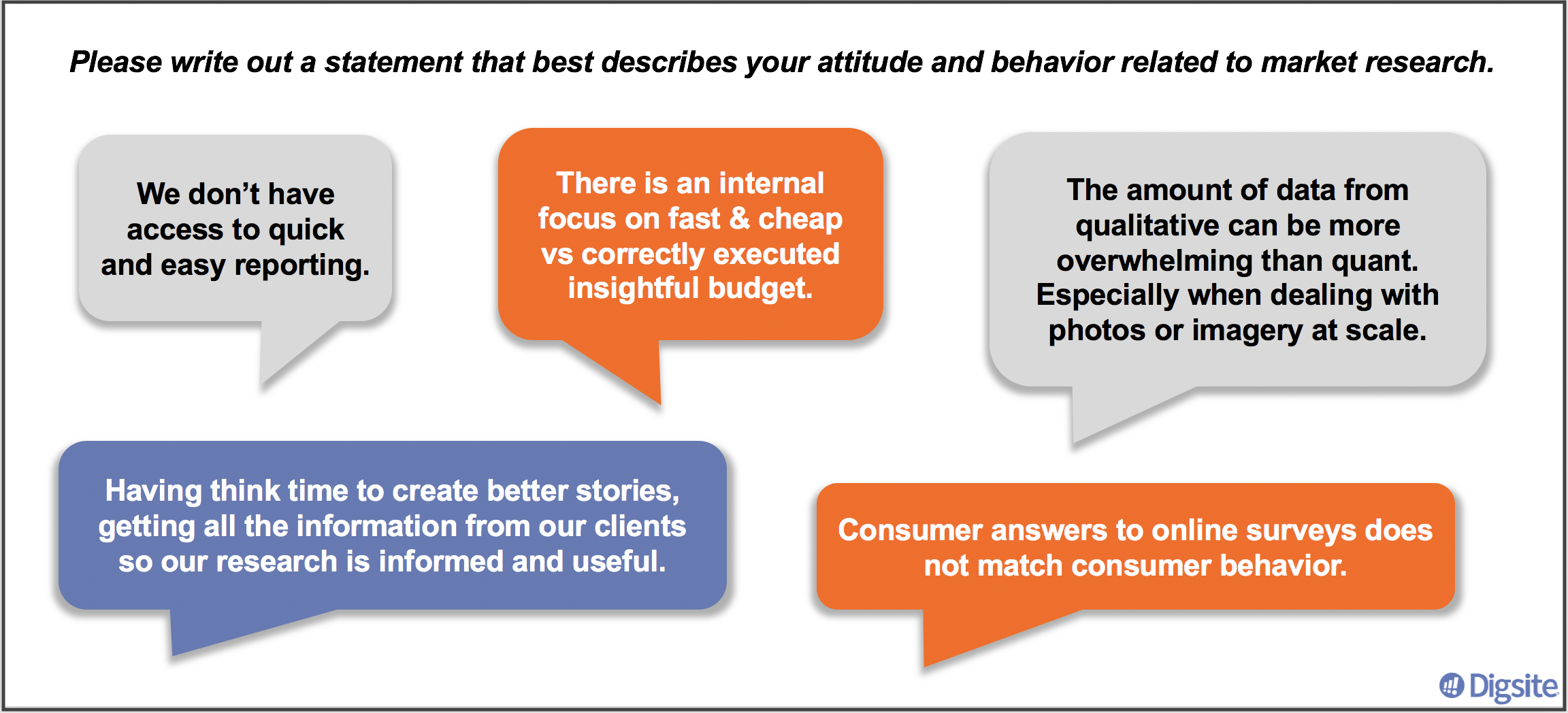It’s been a challenging few years, to say the least. As we look ahead to the coming years, we wanted to uncover the biggest challenges currently facing market researchers. So we did what we do best: designed and conducted a study of 145 insights pros to learn more about the difficulties they’re facing – and then provide ways to address them. Here’s what we learned.
Watch the on-demand webinar here to see the full research report from our study.
Common difficulties
We all know that conducting research in today's landscape has been challenging. In many ways, the pandemic amplified the challenges we were already facing. Top issues included:
- Limited budget and staff
- Team is stretched too thin
- Hard to get both the numbers and stories needed to inform internal decision making
- Slow internal approval process for vendors
- Unrealistic timelines
- Changes in scope after starting a project
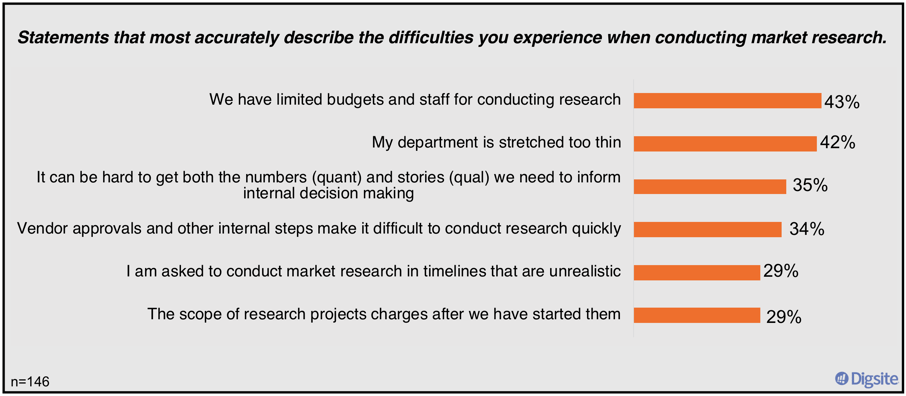
Participants said the most problematic and common issues they faced included the need to:
- Conduct research faster to meet internal deadlines
- Offer simpler and less expensive ways to conduct iterative research
- Conduct quality research with limited resources
- Conduct more research with the same amount of resources
In other words, the top challenges revolved around the need to move faster while dealing with limited resources. These are the biggest challenges because insights pros are just that – pros – who want to do quality work. We all get that – we take pride in our work, and we know it takes more than an algorithm to come up with meaningful insights and recommendations for a team.
Key research study takeaways
We asked insights pros how they are dealing with these challenges today. Their workarounds to time, budget and resource constraints are...
- Working more hours
- Using experience and qualitative insights to get to more actionable stories behind the data
- Seeking out new tools and partners to drive automation and efficiencies
How to address these challenges
In talking to leaders across the industry, we have seen firsthand that it is possible to get more from limited resources and budgets. It isn’t simply about working harder or faster, but about using technology to build flexibility into our methods so we can move faster while getting more targeted, relevant insights. I have two suggestions for any company that wants to take their insights to the next level.
Build research agility to deliver speed and efficiency. Being able to do both qual iteration and quant validation is key. Creating a build, test and learn cycle will speed up processes and deliver faster insights.
Use best practices to ensure quality. Here’s what we suggest:
- Find more targeted participants for your research: people who have demonstrated the specific behavior you want to talk to them about, or who have the knowledge you’re seeking in terms of user experience. Doing this will help ensure quality results and enable focused learning that ties to behavior.
- Capture experiences through photos, videos and interactions. Getting in-depth feedback will allow you to be clear about both the problem and the solutions.
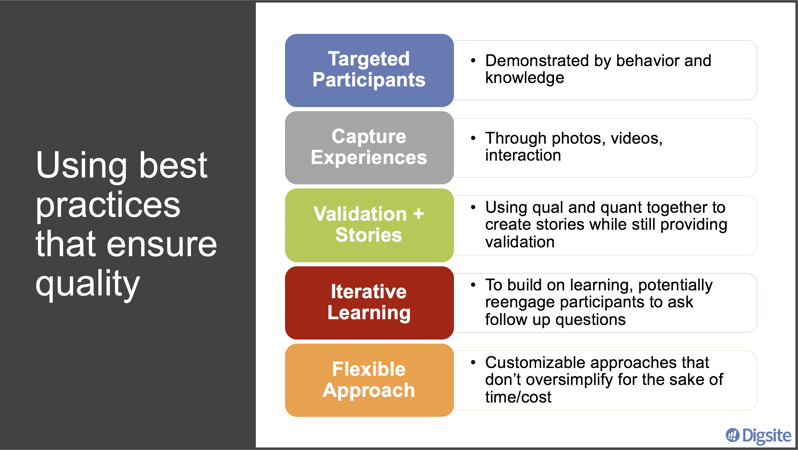
- Use qual and quant together for better context in decision-making by the team. Making these two work together more seamlessly will allow you to create stories while still providing validation.
- Build on learning by re-engaging participants to ask follow-up questions. Newer qual + quant methods allow you to iterate on learning by inviting targeted participants to participate in qual follow-ups to drill deeper into the “whys” and improve as you build.
- Take a flexible approach, using automated research studies with customizable templates that don’t oversimplify for the sake of time/cost. The more you can tailor your questions, the higher likelihood that your team will get the results they need.
Four key ways insights technology can help you deliver
Timelines: Seek out insights technology providers that can offer highly targeted qual + quant recruiting within hours or days. They have automated study templates and reporting dashboards, so you can get instant reporting to drive faster decisions.
Quality: Look for tech solutions that can capture context and experiences rather than just attitudes. You also want the ability to recontact quantitative participants or have multiple touchpoints in your qualitative studies, so you can drill deeper into the whys and iterate on your learning.
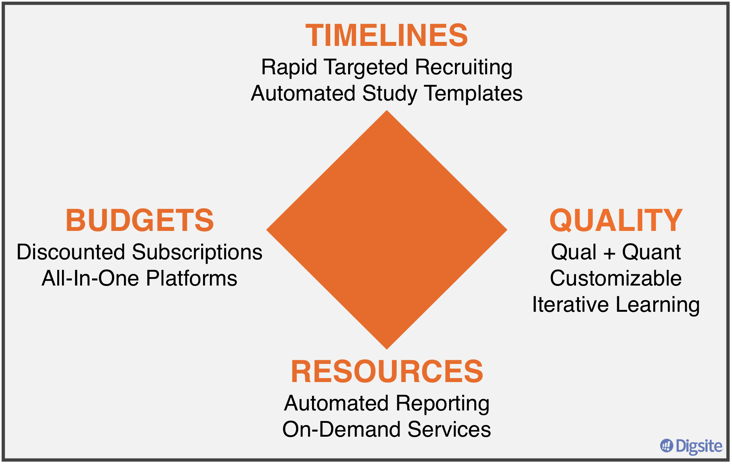
Resources: Seek out technology with reporting dashboards that include built-in sentiment and theme analysis in addition to charts and graphs. Also look for built-in comparisons, benchmarking and stat testing. When looking at your tech options, also consider on-demand services or assisted DIY capabilities. It’s a great alternative to full DIY, if you’re limited on time and need some help getting it all done. It’s also a doable, cost-effective alternative to working with full-service vendors.
Budgets: Working with a tech platform on a subscription basis can be a smart decision. Not only do you save more than traditional discounts with full-service vendors (sometimes 20% or more), but it can save your team time in dealing with bids and approvals on every project. And tech solutions that offer on-demand services can give you the benefits of full-service partners, without the cost.
Next steps to become more agile
So what should you do next if you want to be more agile? First, get leadership buy-in by demonstrating the potential benefits to your timelines and budgets. Next, start building agile skills in your team by experimenting with smaller research sprints. Find a technology partner that can help you – you need to feel comfortable with them and be able to collaborate. As you move forward, take time at the end of each agile study for a short retrospective. Look at your results: Did you get what you needed? Did you work too many hours? What went well? What was inefficient? How can you streamline going forward?
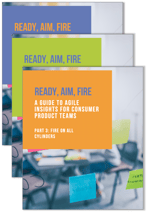
To learn more about agile methods and best practices, check out our new 3-part eBook series: Ready, Aim, Fire: A Guide to Agile Insights for Consumer Product Teams.

